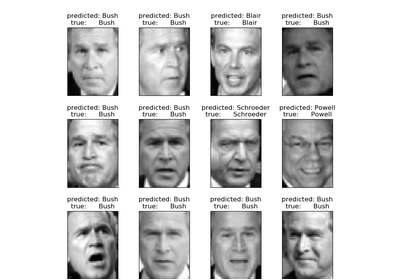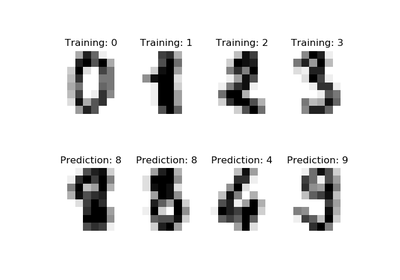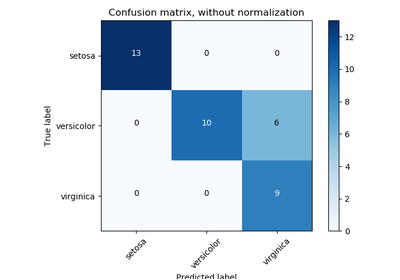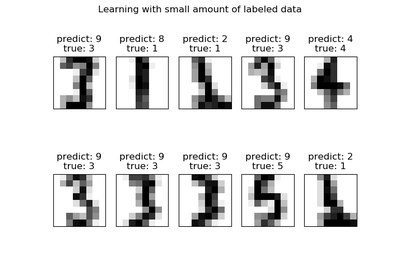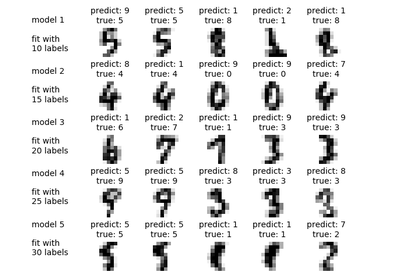sklearn.metrics.confusion_matrix¶
-
sklearn.metrics.confusion_matrix(y_true, y_pred, labels=None, sample_weight=None)[source]¶ Compute confusion matrix to evaluate the accuracy of a classification
By definition a confusion matrix
 is such that
is such that  is equal to the number of observations known to be in group
is equal to the number of observations known to be in group  but
predicted to be in group
but
predicted to be in group  .
.Thus in binary classification, the count of true negatives is
 , false negatives is
, false negatives is  , true positives is
, true positives is
 and false positives is
and false positives is  .
.Read more in the User Guide.
Parameters: y_true : array, shape = [n_samples]
Ground truth (correct) target values.
y_pred : array, shape = [n_samples]
Estimated targets as returned by a classifier.
labels : array, shape = [n_classes], optional
List of labels to index the matrix. This may be used to reorder or select a subset of labels. If none is given, those that appear at least once in
y_trueory_predare used in sorted order.sample_weight : array-like of shape = [n_samples], optional
Sample weights.
Returns: C : array, shape = [n_classes, n_classes]
Confusion matrix
References
[R206] Wikipedia entry for the Confusion matrix Examples
>>> from sklearn.metrics import confusion_matrix >>> y_true = [2, 0, 2, 2, 0, 1] >>> y_pred = [0, 0, 2, 2, 0, 2] >>> confusion_matrix(y_true, y_pred) array([[2, 0, 0], [0, 0, 1], [1, 0, 2]])
>>> y_true = ["cat", "ant", "cat", "cat", "ant", "bird"] >>> y_pred = ["ant", "ant", "cat", "cat", "ant", "cat"] >>> confusion_matrix(y_true, y_pred, labels=["ant", "bird", "cat"]) array([[2, 0, 0], [0, 0, 1], [1, 0, 2]])
In the binary case, we can extract true positives, etc as follows:
>>> tn, fp, fn, tp = confusion_matrix([0, 1, 0, 1], [1, 1, 1, 0]).ravel() >>> (tn, fp, fn, tp) (0, 2, 1, 1)


